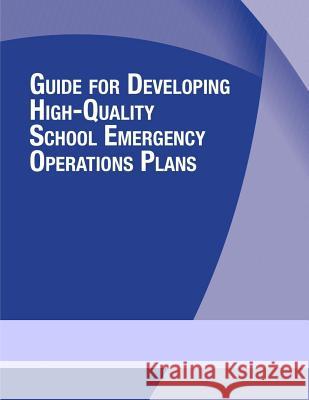Guide for Developing High-Quality School Emergency Operations Plans » książka
Guide for Developing High-Quality School Emergency Operations Plans
ISBN-13: 9781500820879 / Angielski / Miękka / 2014 / 70 str.
Guide for Developing High-Quality School Emergency Operations Plans
ISBN-13: 9781500820879 / Angielski / Miękka / 2014 / 70 str.
(netto: 57,45 VAT: 5%)
Najniższa cena z 30 dni: 60,00 zł
ok. 16-18 dni roboczych
Bez gwarancji dostawy przed świętami
Darmowa dostawa!
Each school day, our nation's schools are entrusted to provide a safe and healthy learning environment for approximately 55 million elementary and secondary school students in public and nonpublic schools. Families and communities expect schools to keep their children and youths safe from threats (human-caused emergencies such as crime and violence) and hazards (natural disasters, disease outbreaks, and accidents). In collaboration with their local government and community partners, schools can take steps to plan for these potential emergencies through the creation of a school Emergency Operations Plan (school EOP). Lessons learned from school emergencies highlight the importance of preparing school officials and first responders to implement emergency operations plans. By having plans in place to keep students and staff safe, schools play a key role in taking preventative and protective measures to stop an emergency from occurring or reduce the impact of an incident. Although schools are not traditional response organizations, when a school-based emergency occurs, school personnel respond immediately. They provide first aid, notify response partners, and provide instructions before first responders arrive. They also work with their community partners, i.e., governmental organizations that have a responsibility in the school emergency operations plan to provide a cohesive, coordinated response. Community partners include first responders (law enforcement officers, fire officials, and emergency medical services personnel) as well as public and mental health entities. We recommend that planning teams responsible for developing and revising school EOPs use this document to guide their efforts. It is recommended that districts and individual schools compare existing plans and processes against the content and processes outlined in this guide. To gain the most from it, users should read through the entire document prior to initiating their planning efforts and then refer back to it throughout the planning process.
Zawartość książki może nie spełniać oczekiwań – reklamacje nie obejmują treści, która mogła nie być redakcyjnie ani merytorycznie opracowana.











